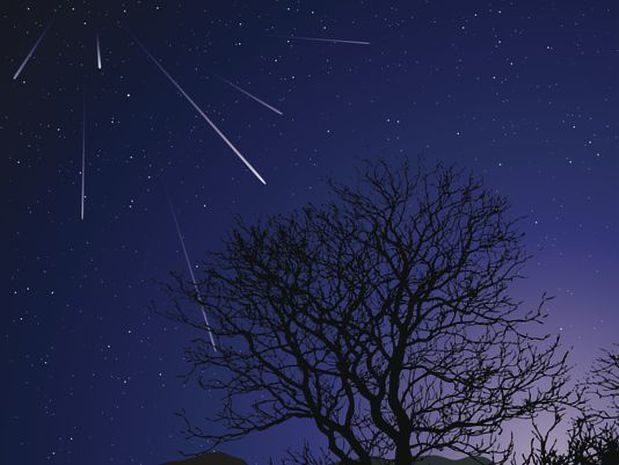
© Creative Outlet, Getty Images/iStockphoto
The Earth is also impacted by meteors all the time. At any given time, tiny meteors in the upper atmosphere provide a reflective path for radio waves to bounce around the Earth to contact distant stations. Just watch for a while and you're like to see a visible meteor streak across the sky.
Larger impacts are much rarer, because there are far fewer large bodies out there. But just last February, a fireball with the explosive power of the Hiroshima atomic bomb struck over the Atlantic Ocean hundreds of miles from Brazil. According to NASA, it was the largest since the Chelyabinsk meteor over Russia in 2013, but no one really noticed it because it was far out to sea.
To learn more about the potential havoc that a truly large impact can wreak, check out the new show Firefall at Astronaut Memorial Planetarium.Since July 1994, when 21 fragments of Comet Shoemaker-Levy 9 (SL9) crashed into Jupiter in succession, leaving a trail of "black eyes" in their wake, observers have been keen to see other objects impacting the giant planet.
The keen view of the Hubble Space Telescope clearly showed dark spots swirling around Jupiter in its cloud bands. Jupiter has no solid surface, so these impacts were just Earth-sized pocks in Jupiter's atmosphere. Nevertheless, scars from the impacts could be seen on Jupiter for many months, visible in amateur equipment.
Since that time amateur astronomers have been keeping up a vigil looking for more impacts. It was a long wait. On July 19, 2009, exactly 15 years after the SL9 impacts, a new black spot appeared in Jupiter's southern hemisphere. This time the mark was only about the size of the Pacific Ocean. Scientists did not observe the actual impact, but measurements showed that the area was warm.
It is thought that an asteroid caused this disruption. Since then Jupiter has been under more intense scrutiny, and this has resulted in six different events being recognized.One of them occurred just last week. On May 26th, between 19:24 and 19:26 Universal Time (about 3:25 p.m. Eastern time), Sauveur Pedranghelu, a French amateur from Corsica, detected an impact flash live on video in Jupiter's north polar region. This was confirmed by a video taken by Thomas Riessler of Dettenhausen, Germany, showing a tiny flash in the same time period.
This is one area where amateur astronomers can make important discoveries. The great observatories and space telescopes cannot look at every object all the time. Amateur astronomers can alert the professionals to make follow observations.Here's the Astronaut Memorial Planetarium schedule for the coming week:
Friday evening, June 2:7:00 P.M. Back to the Moon for Good
8:15 P.M. Solar Max (IMAX movie)
9:00 P.M. Pink Floyd "Dark Side of the Moon" Laser Experience
Saturday evening, June 3:7:00 P.M. Firefall
8:15 P.M. Whales (IMAX movie)
9:00 P.M. The Doors Laser Experience
Wednesday matinée, June 7:2:00 P.M. Back to the Moon for Good
3:15 P.M. The Living Sea (IMAX movie)
The EFSC observatory is regularly open to the public from 6:30 p.m. to about 10:00 p.m. most Friday and Saturday nights.
Jupiter will be visible in our telescope about 8:45 p.m., weather permitting. Bookmark the planetarium show schedule at https://www.calendarwiz.com/planetarium in your web browser.
The secrets are coming out, the people are awakening. The NASA hoax is coming to an end. This is one reason for the rash of fake events and false flags, they need to distract us. It won't work.
* AVR - augmented visual reality (in other words, what you see is not really there)